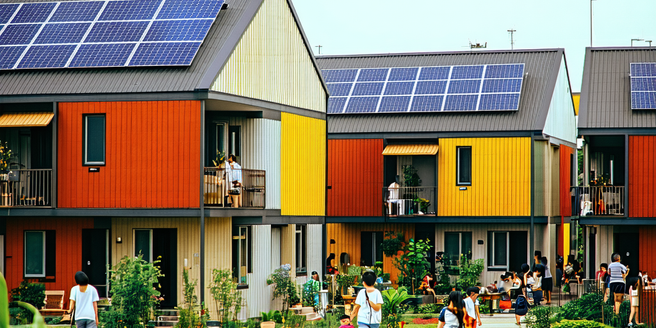Economical Housing Developments

Understanding the Need for Economical Housing Solutions
The burgeoning need for economical housing solutions stems from increasing urbanization and population growth which exert pressure on existing housing infrastructure. Many low and middle-income families struggle to find affordable living spaces in urban areas due to high property prices. Developing economical housing can help bridge this gap by making home ownership and stable living conditions more attainable. Economical housing not only addresses the financial constraints of families but also contributes to the economic stability of regions by ensuring a more equitable distribution of resources. These solutions are crucial in fostering community resilience, ensuring socio-economic diversity, and enhancing overall quality of life for citizens. By understanding the societal and economic factors affecting housing affordability, developers and policymakers can create comprehensive strategies to facilitate access to affordable homes.
Key Features of Affordable Housing Projects
Affordable housing projects are characterized by their strategic planning and efficient use of resources to keep costs low while delivering quality living spaces. Key features include the use of sustainable and cost-effective materials, energy-efficient designs, and strategic location selection to maximize accessibility to public services and transportation. These projects often incorporate community spaces to foster social interaction and ensure security through thoughtful urban design. Accessibility is improved by integrating universal design principles, catering to the needs of people with disabilities. Emphasis is placed on minimizing maintenance costs and maximizing durability to provide long-term affordability and reduce tenant burdens. Collaborative efforts among government, non-profit organizations, and private sectors play a crucial role in realizing these projects by providing financial incentives and subsidies, which are critical for sustaining affordable housing initiatives.
Challenges in Developing Cost-Effective Housing
Developing cost-effective housing comes with a set of challenges that need comprehensive strategies to overcome. One primary challenge is acquiring suitable land at reasonable prices, often difficult in rapidly urbanizing areas. Additionally, funding constraints hamper the initiation and completion of projects. Developers also face regulatory hurdles that can delay construction timelines, such as complex permitting processes and compliance with zoning laws. Moreover, balancing cost-saving measures with the provision of quality housing amenities requires innovative approaches. Building community trust and overcoming social stigma associated with low-cost housing is crucial for project success. Access to affordable construction materials and skilled labor is another significant hurdle, as fluctuating market conditions can affect budget estimates. Addressing these challenges demands collaborative efforts from stakeholders across sectors to craft resilient and adaptive solutions for sustainable, economical housing projects.
Innovative Designs in Economical Housing
In the realm of economical housing, innovative designs play a crucial role in reducing costs while enhancing living experiences. Modular and prefabricated construction techniques are gaining traction due to their cost-efficiency and speed. These methods allow for better quality control and less waste, resulting in significant savings. Incorporating environmentally sustainable designs, such as solar panels and rainwater harvesting systems, helps lower utility costs and supports eco-friendly living. Multi-functional spaces that easily adapt to varying family needs are another feature gaining popularity as they enhance utility without increasing costs. Technological advancements in smart home features offer cost-effective solutions to manage energy consumption efficiently. Integrating green spaces and promoting walkability within housing projects improve residents’ quality of life. Collaborative design processes that involve community input ensure that developments are both economically feasible and socially inclusive, paving the way for future innovations.
Government Policies Promoting Affordable Housing
Government policies are pivotal in promoting affordable housing to ensure wider public access to suitable living conditions. By offering tax incentives to developers, governments can stimulate the construction of low-cost housing units. Policies that streamline the approval process for housing projects can significantly reduce development timelines and costs. Allocation of public land for affordable housing initiatives and partnerships with private developers can facilitate project implementation. Rent subsidies and financial assistance programs for low-income households further ensure housing affordability. Implementing regulations that cap property prices or rents in certain areas can also mitigate the risk of inflated housing costs. Furthermore, establishing housing trust funds provides a sustainable financing source for future housing developments. These policies collectively contribute to a stable housing market, alleviating cost burdens on families and fostering community development.